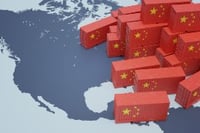According to the Malaysian Department of Statistics, supply from the five main natural rubber producers in Southeast Asia (Thailand, Indonesia, Vietnam, India, and Malaysia) reached 964 thousand tons in January.
While this represents a 1.8% increase compared to the weak performance of 2024, the volume remains below that of the previous two years.
Production recovery in Thailand and Indonesia (+7% and +6% year-on-year, respectively) boosted overall output, although this was partially offset by lower supply from Vietnam.
Overall, as previously anticipated, supply will be better this year than last, but the growth will remain relatively modest. This is expected to keep prices elevated at least through the first half of the year while inventories — still low — begin to recover.
China’s economy and weak supply keep prices high

Recent trends in the natural rubber market remain unchanged. Prices are still elevated, fluctuating around levels similar to those of the past month.
The latest data clearly confirms the key reasons behind this price stability.
On one hand, China’s economy has started the year on a strong note, which is driving rubber purchases (the effects of the trade war have not yet shown up in the data).
On the other hand, global production remains historically low, despite some improvement compared to 2024.
China: strong start to 2025 and a new economic stimulus package

Final data for the first two months of 2025 confirm a strong start for China’s economy, with several sectors growing beyond expectations.
Industrial activity expanded by 5.9% year-on-year, services grew by 5.4%, and both consumption and investment increased by around 4%.
This is boosting demand for raw materials such as rubber, putting upward pressure on prices, as China remains the world's top buyer.
It’s worth noting that the effects of the trade war with the United States will likely appear in second-quarter data.
With renewed Israeli strikes in Gaza, the risk of further disruption in the Red Sea has increased.The hope for a normalization of traffic through the Suez Canal is fading, as shipping routes remain diverted and risks persist.This scenario continues to drive up global shipping costs, putting pressure on logistics across supply chains.At the moment, there are no clear signs of a resolution to the ongoing blockade in the region.

.png?width=3000&height=1023&name=Logo%20Alrubber%20Color-01%20(4).png)


Submit a comment